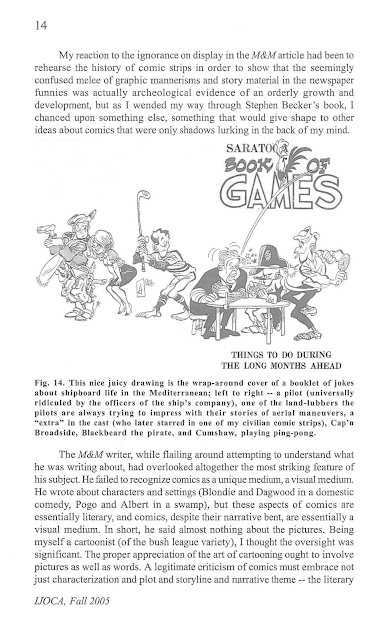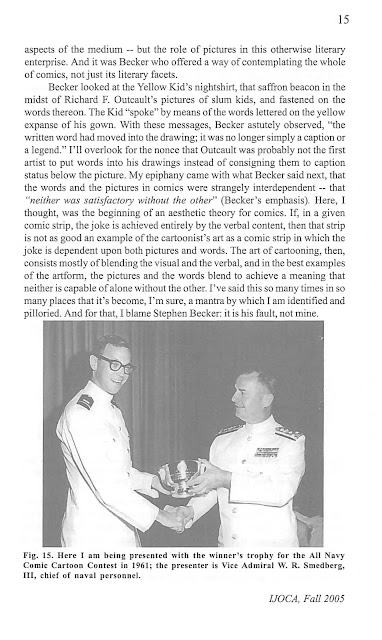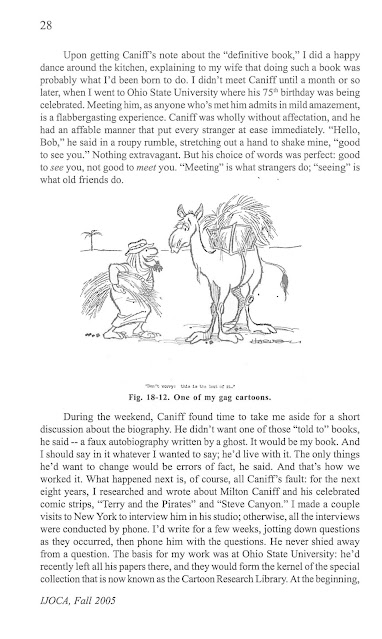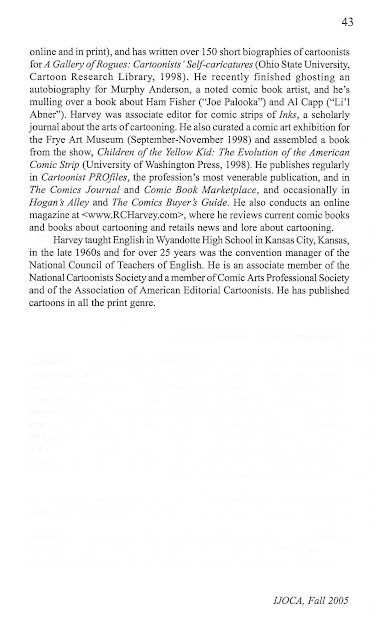by Robert Lemieux
During the first quarter of 2022, I was fortunate to curate a popular animation exhibition, Icons of American Animation. The exhibit spoke to the rich history of one of America’s most popular and influential art forms. The artwork spanned the 20th century, with over 150 pieces from 30 production studios, and emphasized notable characters, films, and animators associated with both film and television. Included within the artwork were 15 Academy Award winners and 20 films listed in the Library of Congress’ National Film Registry. By all accounts, it was an astounding presentation of the animation art form.
I contend that animation consists of two distinct, yet very connected, art forms. The first art form is the film itself. This is what most viewers relate to, as virtually everyone has a favorite animated film. The film is a stand-alone piece of art that is accepted as art, complete with a broad cultural reach (e.g., film studies, film critics, film festivals, film history, commercial tie-ins).
The second art form reflects the ‘art behind the art’ and is less obvious to most viewers. This encompasses the production art needed to make the film – storyboards, model sheets, backgrounds, cels, inspirational paintings, etc. On an intuitive level, we know it exists, but it tends to be overshadowed by the final product, the film. Over the past 35 years, production artwork has become more recognized for its artistic value and has become highly sought by collectors. Our exhibit focused on this production art, as it tells the process of creating an animated film during the hand-drawn era that dominated much of the 20th century.
As a follow-up to the exhibit, IJOCA invited me to submit an article and discuss key aspects. Much of what follows is a ‘show-and-tell’ of the production process with specific examples from the exhibit.
Before I show-and-tell, I want to share a few logistical and planning points. To start with, consider the exhibit’s title. Titling can be a drawn-out and frustrating task, as we search for the ultimate representation. For this exhibit, there were two keywords in the title – Icons and American. Let us address the latter word first, as it is the easiest of the two to discuss.
The inclusion of the word American was both strategic and respectful. To simply call the exhibit Icons of Animation, which was our initial thought, would have negated the contributions of international animation. That may seem like a simple point, but it was important to us.
Using the word icons was considerably more challenging. As one colleague noted, “If you are bold enough to use the word icons, you are going to need some really good stuff.” Agreed. Thankfully, with a history that runs for more than 100 years, animation offers plenty of iconic contenders. That said, what does it mean to be iconic? More importantly, what 20th century American animation would you point to as being iconic?
For ease of argument and simplicity of example, let’s assume we all agree Snow White and the Seven Dwarfs is iconic. The film has a running time of 83 minutes. If the film adheres to the standard 24 frames per second, that’s more than 110,000 hand-drawn images to choose from! What single image or set of images best represents the icon that is Snow White and the Seven Dwarfs? Is it the witch with the apple? Surely the dwarfs must be in there and, of course, Snow White. The prince? There are so many iconic elements to that film that it becomes a challenge. Keep in mind that the images we select help shape the exhibit’s narrative. So, in a sense, we determine that which is iconic.
Let us look at another example, Lady and the Tramp. Is it an iconic film? That is perhaps more debatable than Snow White. However, what is less debatable is the spaghetti scene, where Lady and Tramp share a plate of spaghetti. There is not a better image to represent the film and, yes, it is iconic. Even if I see the image outside of its context, I know exactly what it pertains to and where it comes from.
One of the biggest challenges we faced was finding animation art, iconic or otherwise. Aside from The Walt Disney Family Museum, which houses primarily Disney art, where do you find anything associated with the likes of UPA, Hanna-Barbera, Jay Ward, Fleischer, MGM, or many of the other studios from the 20th century? After considerable research, a fellow curator recommended Mr. Mike Glad, a private collector who has what many consider to be the most comprehensive animation collection. Part of Mr. Glad’s collection has been featured in various museum exhibits, both domestic and international. To be frank, the breadth and depth of his collection is astounding, and it was clear he could satisfy our icon theme.
Equally important was that Mr. Glad’s collection could tell the story of the hand-drawn era. The collection consists of an array of production art that represents the various stages of the animation process. The rest of this article presents aspects of that process via selected pieces.
Storyboard
Generally, the production process starts with storyboarding. Presented below is an example from Pinocchio (1940, Walt Disney Studios) that uses colored pencil on paper, and features scene and camera designations. Even with something as simple as a storyboard, we see the quality and detail of the artistic process. (Fig. 1)
Animation Drawing
This example is from Flowers and Trees (1932, Walt Disney Studios), which is the first Academy Award winning animated short. If you are familiar with the film, you know it is a love story, where the hero tree battles a villain tree for the love of the female tree. This piece represents part of the final scene. After vanquishing the villain, the hero proposes with a caterpillar ring. If you look closely, you can see they have lightly sketched how the caterpillar will roll into position. Also present is a small audience of flower characters in the background. As an animation drawing, it features the characters. You will notice there are no background details. When the characters are transferred to the acetate cel, this is how they will look. (Fig. 2)
Background
Presented below are two examples that illustrate the beauty of background images. The first is from Donald’s Ostrich (1937, Walt Disney Studios), which is watercolor on paperboard. This is the opening image of the film, and it is on screen for a mere six seconds, as the camera zooms in to the station platform. You will notice that there are no characters. Placed over the background would have been acetate cels that show the motion of the characters, in this case a cow, a pig, and flying birds, which are also part of the opening shot. As the camera settles on the station platform, the story unfolds, and all the remaining action takes place either on the platform or the station’s interior. Those scenes would involve different backgrounds that reflect close-up and mid-shot camera angles. The point is that this single image, with its beautiful artistic detail, establishes the sense of place. It also speaks to the ‘art behind the art.’ As an aside, it was one of my favorite pieces in the exhibit. (Fig. 3)
The second background image is watercolor on paperboard from Pigs is Pigs (1954, Walt Disney Studios), and it also features a train station. However, this image reflects the impact of modern art on animation, post-World War II. During the exhibit, we placed the two train station images side-by-side to show the changing styles. This image appears at the end of the film and, like the image from Donald’s Ostrich, it is on screen for a mere six seconds. (Fig. 4)
Layout Drawing
This piece from Snow White and the Seven Dwarfs (1936, Walt Disney Studios) is an example of a layout drawing, as it combines the features of an animation drawing and the background. The characters and the background are represented. The dwarfs, as well as the squirrel and rabbit, are moving characters that would be on acetate cels. Everything else would be part of the watercolor background. An incredible amount of artistry for a ‘simple’ layout drawing. (Fig. 5)
Inspirational Painting
How is the mood of a scene established? Many artists create mood boards during the early part of the creative process. Similar to brainstorming, mood boards consist of images that an artist collects, and they help direct the artist in his/her creative process. Inspirational paintings are akin to mood boards and, as the name suggests, they are paintings that help set the look and mood of a scene. This example is from Cinderella (1950, Walt Disney Studios) and is watercolor and gauche on paperboard. Although the final scene may not look exactly like this, the image serves as the model. You get a sense of the mood via the colors, perspective, and shapes. This piece was created by Mary Blair, one of the few notable female animators. (Fig. 6)
Model Sheet
Depicted here is a Lois Lane model sheet from Fleischer Studio’s Superman series in the 1940s. A model sheet provides detailed information about a character. In this example, we see anatomy, proportions, motion, angles, attire, and, in the lower right corner, detailed information about her eyes and mouth. A model sheet helps maintain the character’s consistency, especially if there are multiple artists drawing the same character. Virtually every primary character in an animated film would have an accompanying model sheet. (Fig. 7)
Color Model
A color model is, essentially, an animation drawing with color notations. This image is from Porky’s Duck Hunt (1937, Warner Brothers Studios) and reflects how color is attributed. All the notations indicate the colors to be used, whether for clothing, props, or aspects of the character. In this example, we see BR (brown) for Porky’s jacket, blue-grey for the gun barrel, yellow for Daffy’s feet and bill, and two types of red for Porky’s hat. Like a model sheet, the color model helps maintain the color consistency. (Fig. 8)
Cel Setup
This image is from The Band Concert (1935, Walt Disney Studios), and it represents the totality of the process, with everything in place. All the, somewhat muted, colors are associated with the watercolor background, and all the vibrantly colored characters are on acetate cels. This is the opening scene of the film, and the camera slowly zooms in toward the stage over the course of ten seconds. The impressive part is that all the audience members are in motion, as they cheer and clap. Considering the number of characters in the audience, that’s an extraordinary amount of motion that must be drawn, frame by frame. In short, this is a complex image. Thus, the more complex your design, the more complex it becomes to create the image and motion. (Fig. 9)
Music
The roll of music is pivotal in film, particularly within animation. During the 1930s, many animated shorts consisted solely of music, with no dialogue. Disney’s Silly Symphony series, which numbered 75 short films, relied heavily on the musical score to promote the action. Some of the most notable films in animation history come from that series (e.g., Flowers & Trees (1932), The Skeleton Dance (1929), The Old Mill (1937)). Warner Brothers was also active in creating musical shorts, as they attempted to take advantage of their extensive music library. Many of today’s modern feature-length films have produced notable soundtracks (e.g., The Lion King). In short, music is a key component in the production process.
The example presented below is a music sheet from Fantasia (1940, Walt Disney Studios), and it speaks to the intricacies of coordinating music to image. You will notice how the French horn and the bugle are emphasized in the musical notation and, most interestingly, how it applies to the scene. Below the musical notation is a watercolor thumbnail image of the scene accompanied by the camera shot notations. In this case, it is an exterior long shot of the castle, with a description of the sorcerer’s action. Most impressive is the thumbnail image, which speaks to the quality of the detail and craftsmanship. There were four Fantasia music sheets in the exhibit. (Fig. 10)
As popular as the art form has become, in the early 20th century animation was often viewed as an experimental novelty. The labor-intensive process of creating multiple drawings per second of film time was considered inefficient and costly by film studios. Despite these perceptions, it wasn’t long before like-minded animators joined forces, and the early strands of animation’s DNA began to coalesce into Fleischer Studios, Walt Disney Studios, Warner Brothers, Terrytoons, and Walter Lantz Productions. This hand-drawn energy would usher in animation’s Golden Era, which would extend for 40 years into the 1960s.
Throughout the Golden Era, most animated films were released as shorts, with running times of approximately seven minutes. The shorts were shown prior to a live-action feature film and, on occasion, proved more popular than the feature. In 1937, with the release of Snow White, the animated feature was born, adding to the art form’s popularity. After World War II, new studios began to emerge, such as Hanna-Barbera, Jay Ward, and UPA. In addition to the new material, many older shorts found a second life via a new venue – television. The segue to television in the 1960s also brought about a shift, as the number of features declined and, with the emergence of Saturday morning cartoons, animation became tailored toward children. In the last two decades of the 20th century, the industry rekindled itself with a resurgence of features from Walt Disney, as well as new studios, such as Don Bluth, Pixar, and Dreamworks. Additionally, there was an influx of prime-time animated television shows.
Over the course of the past century, one thing has become clear: The “experimental novelty” has transformed itself into a legitimate art form that continues to animate the imagination.
A version of this essay will appear in print in IJOCA in the fall.






















































